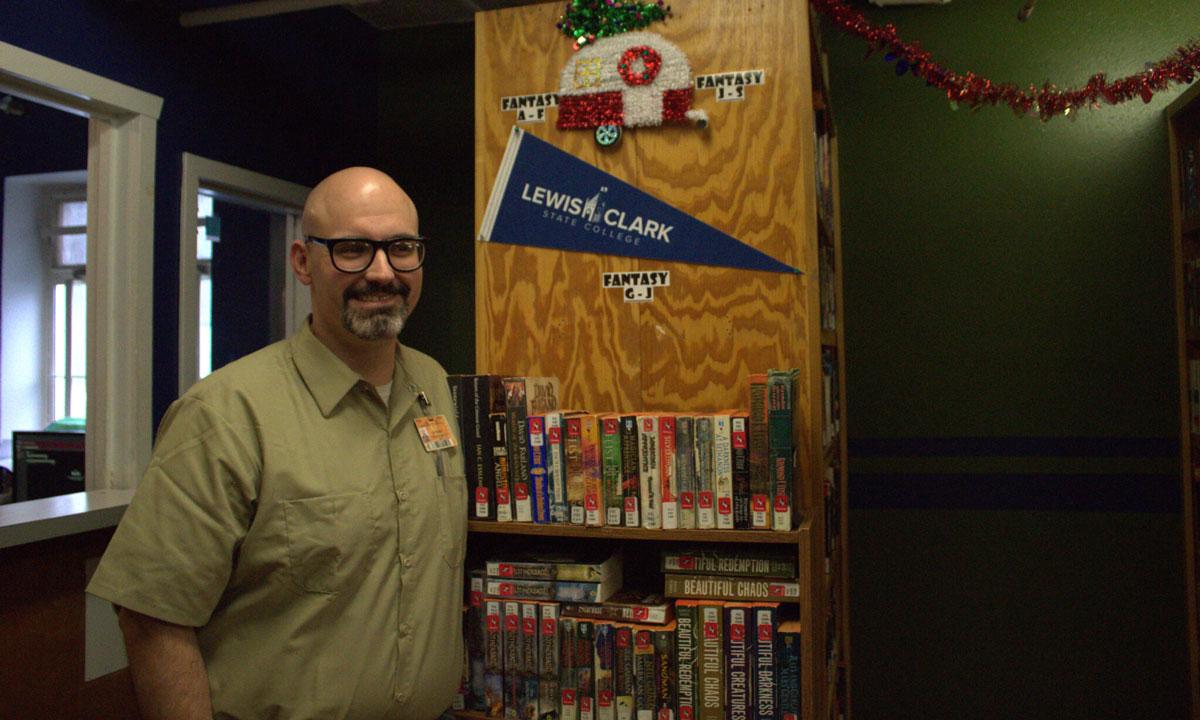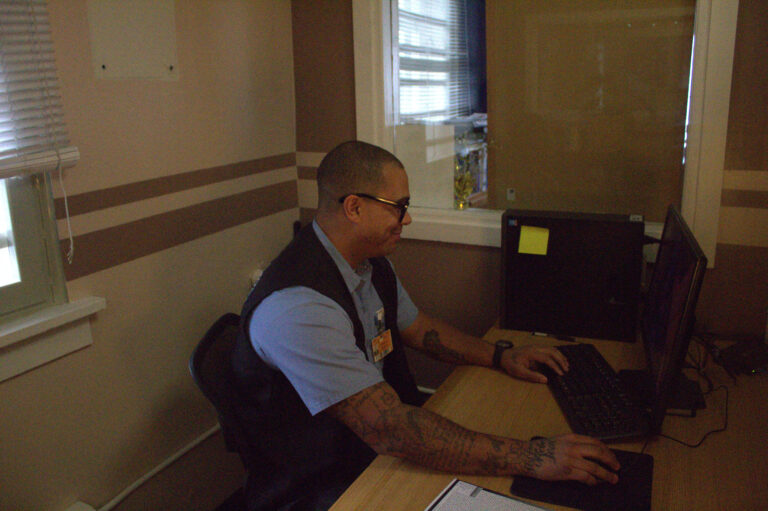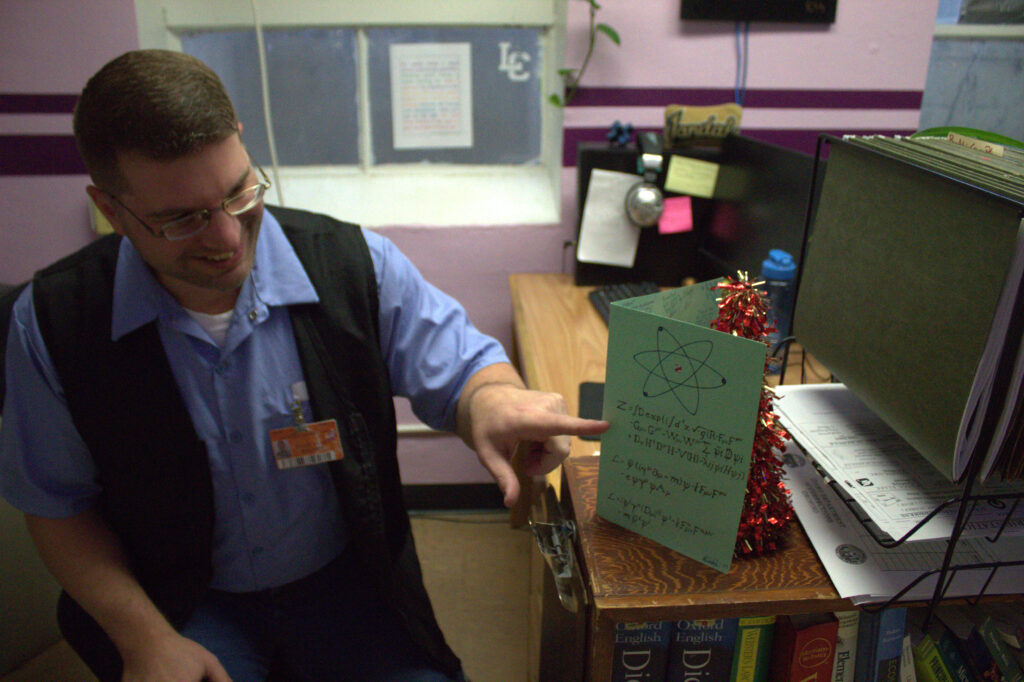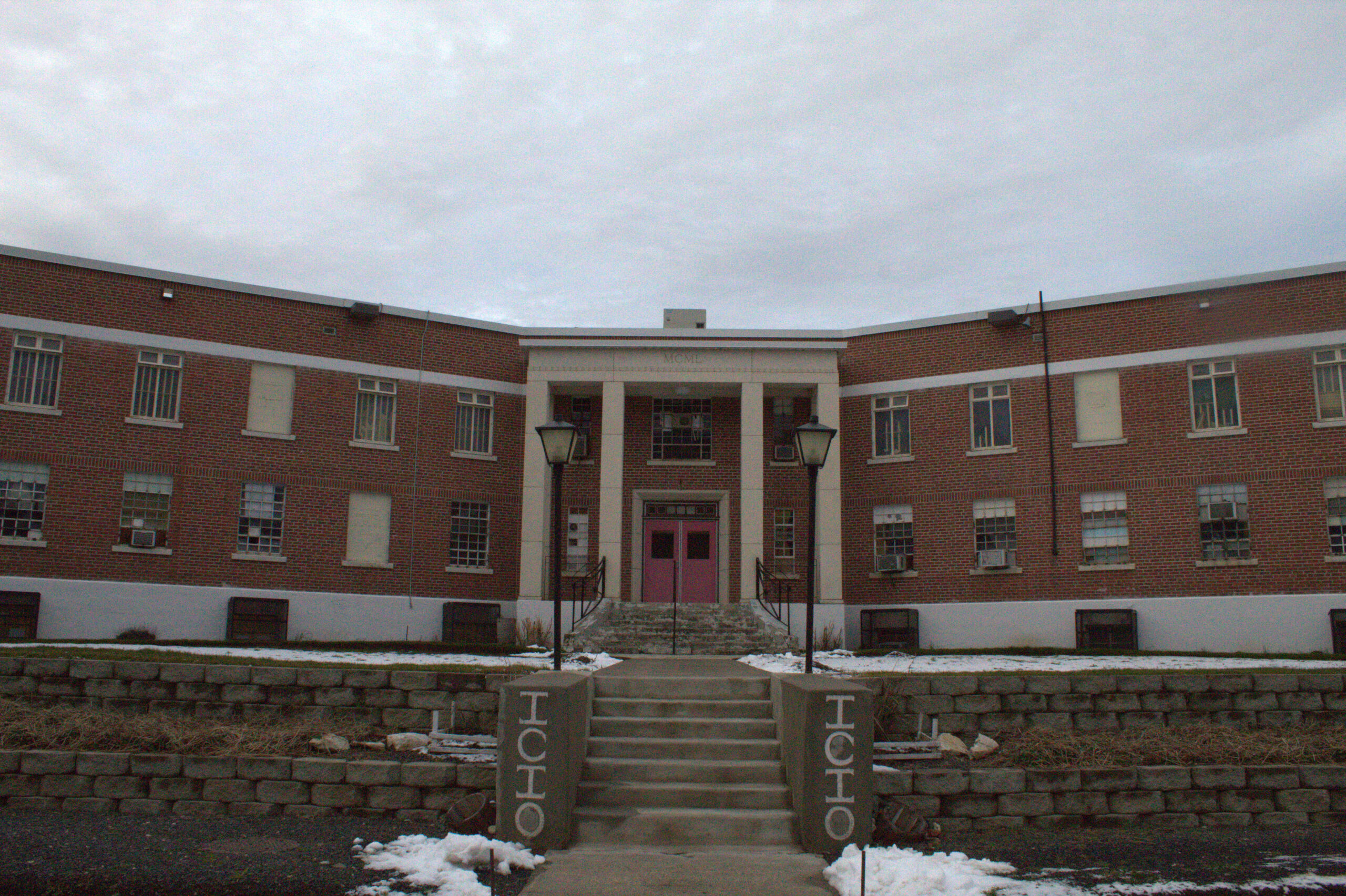Federal Grants Offer Idaho Prison Students a Second Chance at College Education
University of Idaho, Lewis-Clark State College began participating in the Second Chance Pell in fall 2022.

Get stories like this delivered straight to your inbox. Sign up for The 74 Newsletter
Sean Carnell, who grew up in Boise, never saw himself pursuing a college education. He was sentenced to prison on battery and robbery charges in 2013 — where he later received his GED. He faces another four years before he can be considered for parole.
Despite his past, Carnell made the dean’s list at the University of Idaho for the last two semesters in a row.
Carnell, a resident at the Idaho Correctional Institution in Orofino, attends college through the Second Chance Pell Experiment — a program launched by the U.S. Department of Education which provides need-based Pell Grants to people in state and federal prisons.
“I never thought I’d have straight A’s, let alone be enrolled in college,” Carnell told the Idaho Capital Sun. “Having the hope of achieving something, of being able to walk out and say I did something with my time to try to better myself, is huge.”
Like Carnell, more than 90 residents at the Orofino prison registered for the spring semester through the Second Chance Pell program — keeping themselves busy in prison while also aiming to enhance their resumes in preparation for their eventual release.
“This is the first time in corrections that I’ve felt that I’ve been valued as a human being,” Carnell said. “Most of the time we are the sum of our failures. This gives us the opportunity to try to achieve these levels of success that we never thought possible.”

Thirty years later, Idaho prisoners have access to college education
Three decades ago, the federal government removed Pell Grant eligibility for incarcerated individuals through the Federal Crime Bill of 1994. The ban was enacted amid a wave of “tough-on-crime” policies in the 1990s.
But in 2015, the Obama administration reinstated access to Pell Grants for incarcerated individuals as studies began to show that prison education plays a role in decreasing crime.
According to the Vera Institute of Justice, incarcerated people who have participated in postsecondary education in prison are 48% less likely to reoffend than those who do not. Additionally, every dollar invested in prison-based education results in four to five dollars in taxpayer savings from reduced incarceration costs.
Between 2016 to 2020 — the first four years of the reinstated access to Pell Grants — over 7,000 prison students earned either an associate degree, bachelor’s degree, or a certificate or diploma, according to the Vera Institute.
In fall 2022, the University of Idaho and Lewis-Clark State College became the first schools in the Gem State to participate in the program — bringing the total number of colleges participating in the program to 200.
Most courses are asynchronous and are conducted virtually at the prison’s school space using designated laptops. However, some university professors make on-site visits to the facility, accompanied by non-incarcerated students.
While the program requires a lot of partnership and collaboration between the schools and correctional staff, Sean Quinlan, the dean of the University of Idaho’s College of Letters, Arts and Social Sciences, told the Sun that it is worth it.
“Access to higher education and to complete college degree as an inmate is one of the surest predictors for keeping people from crime in the future,” Quinlan said. “I believe that this is a really important way of serving our state – to help people improve their lives and have safer communities.”
‘They’ve been waiting for something like this’: IDOC education director says
Ted Oparnico, the Idaho Department of Correction education director, told the Sun there was significant interest from correction residents to participate in the program.
In Idaho, some incarcerated people earn between 10 to 30 cents an hour, so the Second Chance Pell program makes it possible for them to fund their education beyond a GED or certificate.

“I think they’ve been waiting for something like this for a long time,” Oparnico said. “We typically only provide GEDs as our secondary certificate, but once they complete that, well, what’s next? They might have another five or 10 years or longer left, so having a Pell program gives them some opportunities to continue education.”
Students in Idaho prisons are still in their first few semesters of having access to the Pell Grants, so none have graduated as of yet, Oparnico said.
Silas Parks, who was imprisoned in 2010 on manslaughter charges for killing his pregnant wife, told the Sun he has been excited to see this program come to Idaho.
“I have literally day-dreamed for over 10 years sitting in prison about getting out of prison and going back to college,” he said. “I’m still here, but I can go back to college which is an awesome experience.”
Parks attended the University of Idaho before going to prison, but he did not complete his bachelor’s degree. Now enrolled with the financial help of the Second Chance Pell Grant, he is close to receiving his degree. His next goal is to receive a graduate degree once he is released.
“I came to prison when I was 23, and I was not the most mature person,” he said. “Now I know what I want. Nothing teaches you what you want more than having everything taken away.”
To participate in the program, residents have to have a GED or high school diploma and be six months without any disciplinary offenses. They also must complete a 20-hour college preparatory course, and commit to at least a semester of a class or pay back the funds if they choose to leave.
“It’s a benefit for the community,” Oparnico said, adding that 90% of prison residents will eventually be released from the Idaho correctional system. “When we have people who leave our facilities, the public can know that they’re getting a neighbor that has an education because they spent the time, commitment, and they dedicated themselves to being better prepared to contribute to society.”
‘Everybody can do this’: IDOC resident says about college
Like Carnell who never saw himself attending college, and like Parks who acknowledged his immaturity at the time of his sentencing — Travas Bickhart is also proud of the personal growth that’s come with being a college student in an Idaho prison.
Giving more attention to alcohol and drugs, Bickhart graduated high school with roughly a 2.8 GPA, despite paying people off to do his homework, he told the Sun.
In 2018, Bickhart was sentenced to up to 20 years in prison on rape charges, with the possibility of parole after 10 years.
Despite being the first person in his family to go to prison, he is also the first person in his family to receive a college education. He told the Sun that he’s learned a lot about himself in the process of taking college courses.
“You can’t give up on yourself,” he said. “No matter what your position is or what crime you’ve done, everybody can do this. I’ve made a lot of mistakes in my life, but this is the only thing I’ve been proud of to this point.”

Idaho Capital Sun is part of States Newsroom, a nonprofit news network supported by grants and a coalition of donors as a 501c(3) public charity. Idaho Capital Sun maintains editorial independence. Contact Editor Christina Lords for questions: info@idahocapitalsun.com. Follow Idaho Capital Sun on Facebook and Twitter.
Get stories like these delivered straight to your inbox. Sign up for The 74 Newsletter

;)